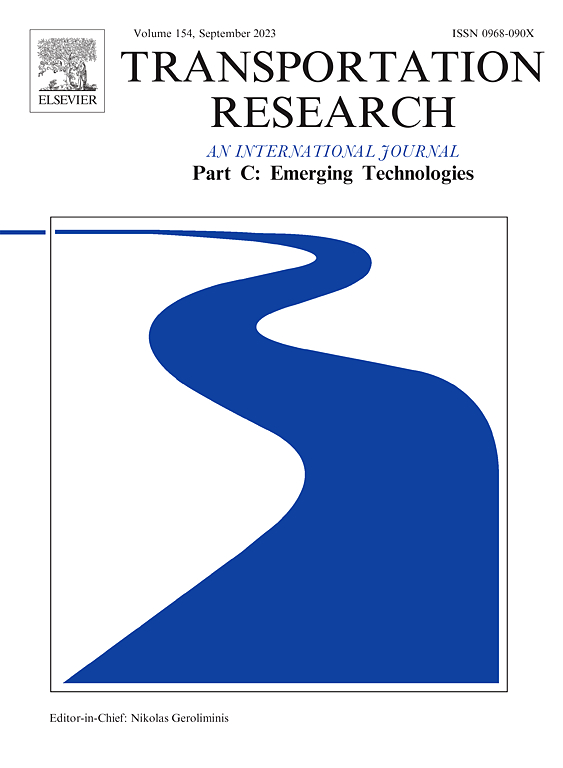Optimizing prediction models by considering different time granularity of features and target: Problem and solution
IF 7.6
1区 工程技术
Q1 TRANSPORTATION SCIENCE & TECHNOLOGY
Transportation Research Part C-Emerging Technologies
Pub Date : 2025-02-04
DOI:10.1016/j.trc.2025.105002
引用次数: 0
Abstract
In many prediction tasks, a common characteristic of training datasets is that features are more frequently updated than target, or in other words, the time granularity, or granularity for short, of features is smaller than that of target. One typical example is predicting ship fuel consumption in maritime transport. Current practice usually ignores such characteristic when developing the prediction models, which may jeopardize prediction accuracy and reliability. However, this issue is neither systematically discussed nor addressed in existing literature. To bridge this gap, this study aims to formally discuss the differences in the granularity of features and target as an ubiquitous issue in prediction problems. Then, an innovative two-stage tree-based approach that considers such differences by maximizing the usage of more frequently updated features is developed. We then go a step further to extend the proposed two-stage tree-based approach to predict accumulative target considering monotonicity and data generation process. Extended numerical experiments using simulated and real datasets in maritime and urban transportation are conducted to verify the superiority of the two-stage tree-based approach and its extension.
求助全文
约1分钟内获得全文
求助全文
来源期刊
CiteScore
15.80
自引率
12.00%
发文量
332
审稿时长
64 days
期刊介绍:
Transportation Research: Part C (TR_C) is dedicated to showcasing high-quality, scholarly research that delves into the development, applications, and implications of transportation systems and emerging technologies. Our focus lies not solely on individual technologies, but rather on their broader implications for the planning, design, operation, control, maintenance, and rehabilitation of transportation systems, services, and components. In essence, the intellectual core of the journal revolves around the transportation aspect rather than the technology itself. We actively encourage the integration of quantitative methods from diverse fields such as operations research, control systems, complex networks, computer science, and artificial intelligence. Join us in exploring the intersection of transportation systems and emerging technologies to drive innovation and progress in the field.

 求助内容:
求助内容: 应助结果提醒方式:
应助结果提醒方式:


